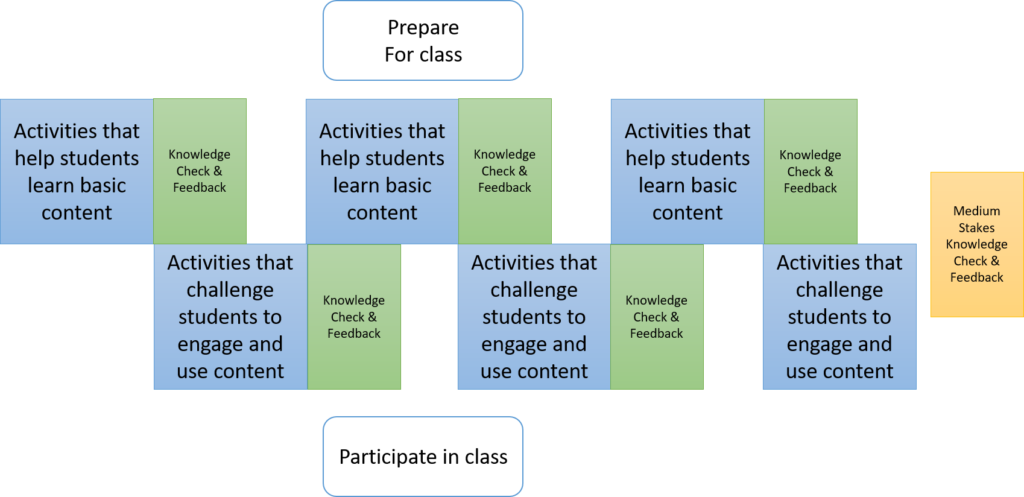Course Format and Philosophy
Principles of Course Design and Structure
Designed for Learning
The Physics 103 and 104 instructional teams value student success, and the course design reflects this. We recognize that experts sharing content with students is a core part of higher education and lecturing is still a core method for transfering knowledge. We didn’t set out to fully eliminate lecture in Physics 103 and 104. Rather, our intention is to shift our course design so that students have more active and engaged learning opportunities. These practices are based on strong evidence from research in congnitive and behavioral science. Research from Curriculum and Instruction and Educational Psychology have demonstrated that students are more successful when:
- They can anticipate consistent patterns of instruction
- They are engaged in and take responsibility for their learning process
- Expectations and success metrics are clearly defined
- They understand what they need to do and when they need to do it
- Content and practice opportunities are “chunked” into a logical sequence that not only spaces out learning, but helps students make sense of the information.
- They have opportunities to use new content in problem solving and critical thinking
Each aspect of the course–from the aesthetics of the Canvas Course Hub and WCM slides to the weekly patterns of out-of-class and in-class learning opportunities, are built on these prinicples.
Blended Learning: The Castletop Model.
The learning activities in Physics 103 and 104 follow a curricular sequence known as the Castle Top Model (Fink, 2009), perhaps because the diagram looks like parapets on top of a castle wall. The basic premise of the Castle Top Model is that students are expected to learn basic concepts and content outside of face-to-face classtime. Gernerally, in a blended format, classtime is used to reinforce and extend content by engaging students in facilitated practice, analytical, evaluative, and creative thinking, problem solving, projects, and social learning. The most effective models have built in opportunities for students to practice and recieve feedback.

In the Castle Top Model, content is “chunked” (it really is a technical term from cognitive psychology) and sequenced in an intentional way. Spacing the content in this manner does two things. First, learning the content in smaller units is more manageable and focused. Students are less likely to miss important content. Second, it models how information is consolidated in the discipline. We know that novice students have a challenging time identifying the relationships between disparate pieces of information especially in a challenging and new discipline. Those relationships impose meaning and significance on the information.
Flow
The usual depiction of the Castle Top Model, as above, excludes a critically important element. The Castle Top Model is most effective when out of class and face-to-face time flow into one another. Out of class activities should be designed to do three things: 1) Present the content 2) Help the students absorb the content 3) Directly prepare the students to apply the content in the following face-to-face class time. The relationship between the out of class activities and the face-to-face time activities needs to be made explicit for the students. In Physics 103 and 104 we refer to this flow through the different elements of the course the The Weekly Rhythm for Students.

